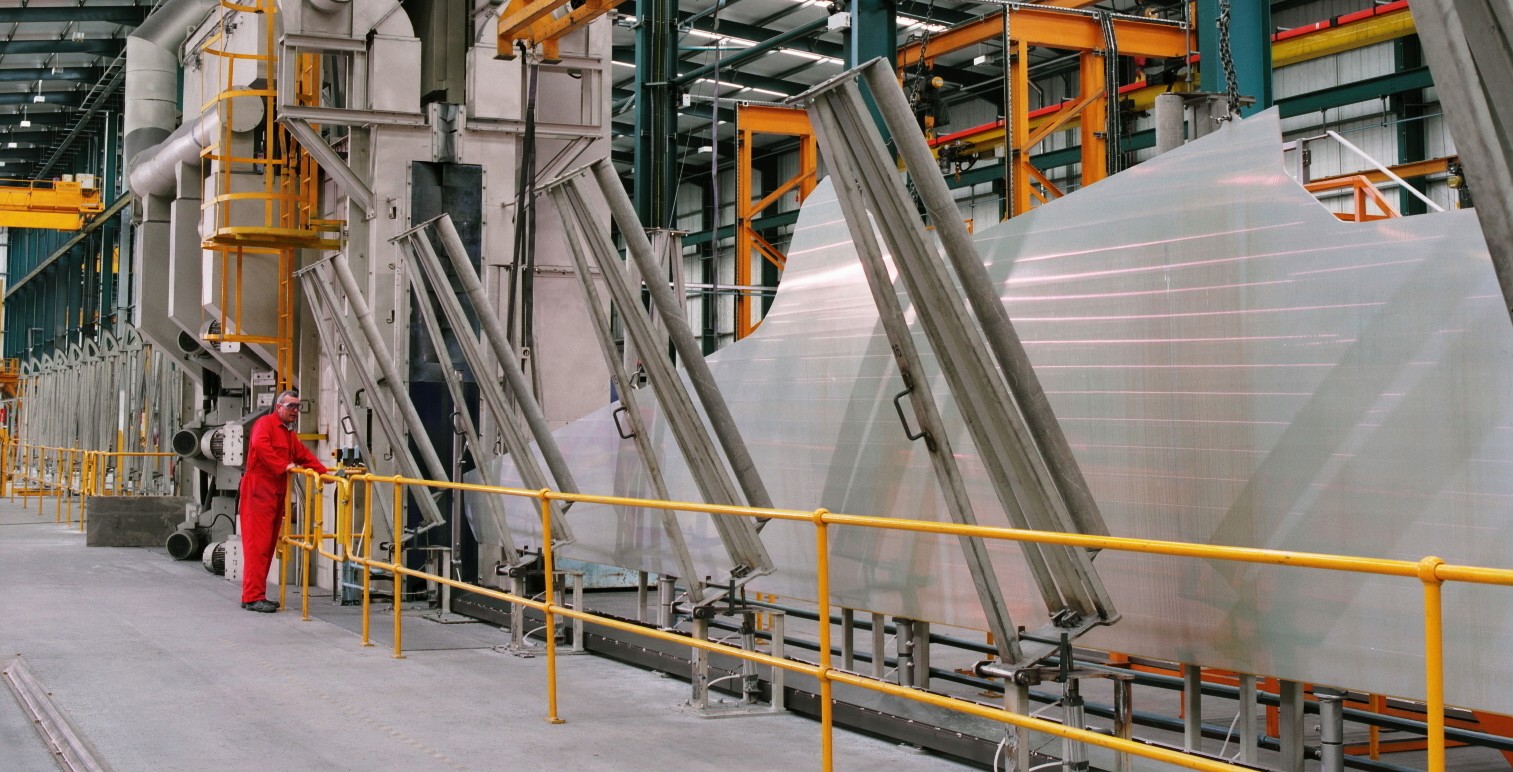
Shot Peen Forming uses the compressive stresses induced by controlled shot peening to alter the stress pattern, magnitude and depth to deliberately create a change in the component shape. Gentle curves within the elastic range of the material are regularly formed to consistent tolerances.
Varying curvature requirements, material thickness, cut outs, reinforcements and pre-existing distortion can all be processed.
According to a predetermined specification, media is fired at the surface creating indentations in the surface. Each indentation causes the material to elastically stretch but is restrained by the substrate. The surface will bend or ‘arc’ towards the peened side and the resulting curvature will force the lower surface into a compressive state. This controlled process enables the surface to be manipulated into the desired and sometimes complex contours.
Laser peening is an alternative technique for the introduction of residual compressive stresses. It has the advantage over conventional shot peening in that it induces these stresses to greater depths, consequently a tighter radius of curvature can be achieved or performed on thicker materials.
Parts formed by peen forming exhibit increased resistance to flexural bending fatigue and where peen formed pieces are processed on one side only, the result causes both sides to have compressive stress. These compressive stresses serve to inhibit stress corrosion cracking and to improve fatigue resistance.
Peen forming is the preferred method of forming aerodynamic contours for aircraft wing skins. It is a dieless forming process that is performed at room temperature and it is best suited for forming curvatures where the radii are within the elastic range of the metal without abrupt changes in contour. 3D Computer modelling techniques based on the degree of compound curvature will calculate and illustrate the degree of peen forming required.
A very successful method of correcting distortion caused during manufacturing for example through casting, rolling, forging and heat treatment, is using controlled shot peening to stretch the material on the concave side of the distorted component to bring the component back to pre-manufacture specification.
© 2025 Curtiss-Wright Corporation | User agreement | Privacy Policy | Cookies | Sitemap